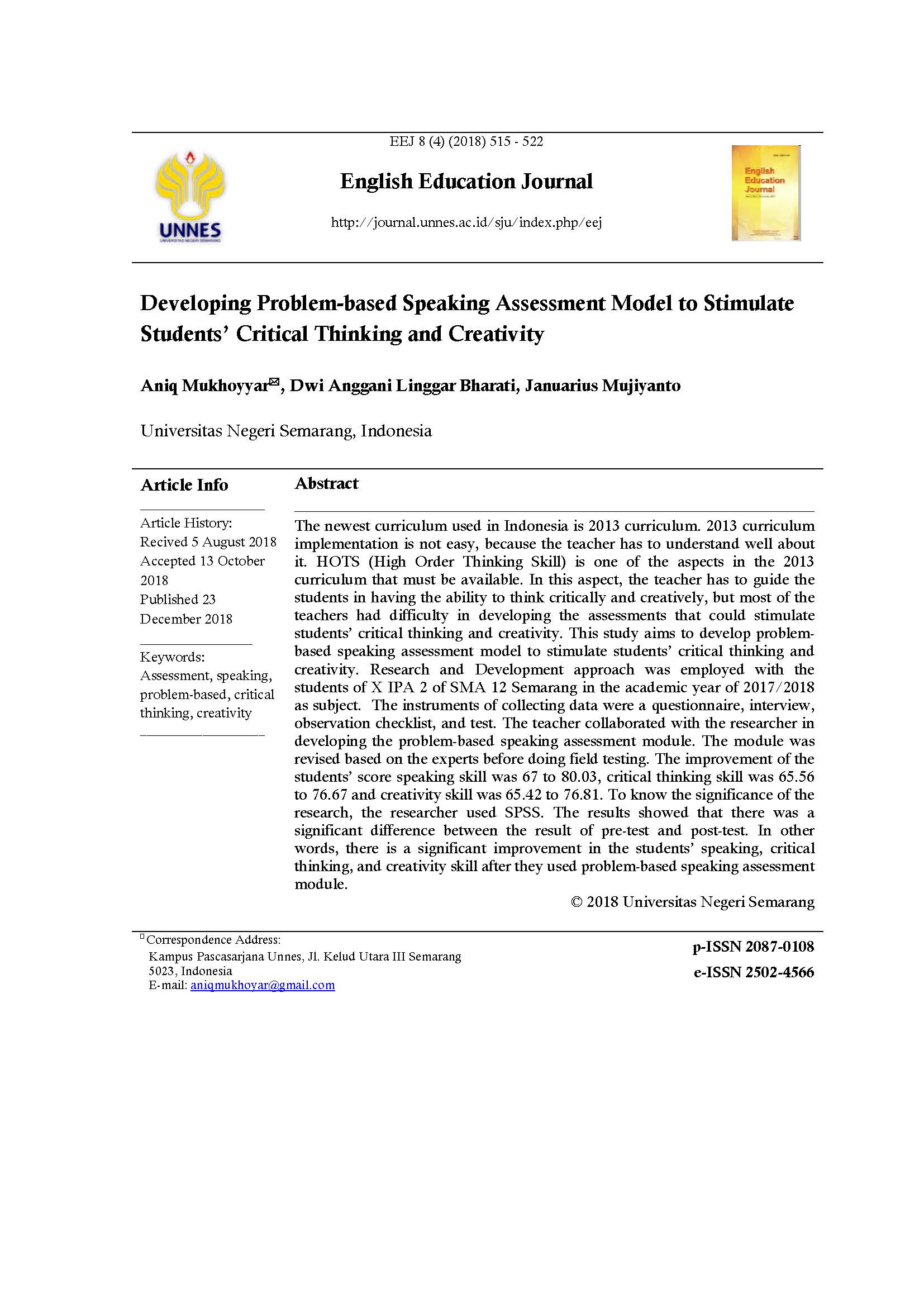Developing Problem-based Speaking Assessment Model to Stimulate Students’ Critical Thinking and Creativity
##plugins.themes.academic_pro.article.main##
Abstract
The newest curriculum used in Indonesia is 2013 curriculum. 2013 curriculum implementation is not easy, because the teacher has to understand well about it. HOTS (High Order Thinking Skill) is one of the aspects in the 2013 curriculum that must be available. In this aspect, the teacher has to guide the students in having the ability to think critically and creatively, but most of the teachers had difficulty in developing the assessments that could stimulate students’ critical thinking and creativity. This study aims to develop problem-based speaking assessment model to stimulate students’ critical thinking and creativity. Research and Development approach was employed with the students of X IPA 2 of SMA 12 Semarang in the academic year of 2017/2018 as subject. The instruments of collecting data were a questionnaire, interview, observation checklist, and test. The teacher collaborated with the researcher in developing the problem-based speaking assessment module. The module was revised based on the experts before doing field testing. The improvement of the students’ score speaking skill was 67 to 80.03, critical thinking skill was 65.56 to 76.67 and creativity skill was 65.42 to 76.81. To know the significance of the research, the researcher used SPSS. The results showed that there was a significant difference between the result of pre-test and post-test. In other words, there is a significant improvement in the students’ speaking, critical thinking, and creativity skill after they used problem-based speaking assessment module.
